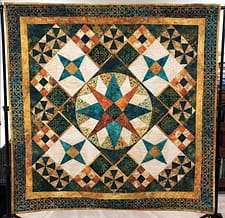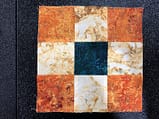As a quilt designer, one of the most common questions I get about the patterns is – “is it foundation (paper) pieced or traditional piecing?” Why does this matter? Some people are not comfortable in their traditional piecing skills. They don’t think that they can get the seams straight or the blocks the right size. They want it to be perfect and foundation piecing definitely helps with that. Other have never tried foundation piecing so don’t even know where to begin. That was me about 15 years ago until taking an amazing class with Carol Doak. Some people don’t care as they are relatively proficient at both methods. That is where I am today.

Okay – some people prefer one method over another. How do I choose which method to use when designing a pattern? I make the decision of which method based upon the complexity and shapes within the block. I am terrible at cutting out templates and sewing them together well – despite home economics classes and my mother being an excellent seamstress and teacher. The pieces warp, my scissors slip, the directions aren’t clear – you get the picture. So if a design is more complicated, I chose foundation piecing. Truth be told, you can turn any foundation piece into templates by adding a quarter inch seam allowance to each piece you cut from the foundation. Back to my decision-making process – if it has simple pieces like triangles, rectangles or squares, regardless of how many, I will probably chose traditional piecing.

Let me give you a few examples from my Celtic Medallion quilt. The quilt has eight Nine Patch blocks. These are squares sewn together. With a simple strip piecing technique, these will go together quite easily. So I wouldn’t use foundation piecing. You can, but I wouldn’t.

On the same quilt, the center medallion has curves and odd angles. I used foundation piecing there to ensure the unique shapes came out as I expected. Because of the complexity of this design, the foundation piece is subdivided into several smaller pieces for ease of assembly. This sample foundation shown to the left fits between the teal and orange spokes of the medallion. As you can see, those three pieces are oddly shaped. Therefore, the foundation is perfect for them.
Regardless of the method of assembly I choose, I try to write the instructions for the quilter so they can easily assemble the pieces. Quilting should be a joy, not aggravation! I hope you enjoy my patterns.
Happy Quilting
Laureen
